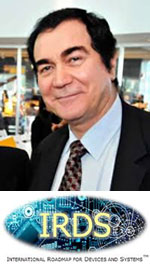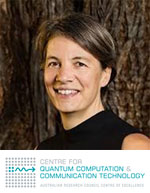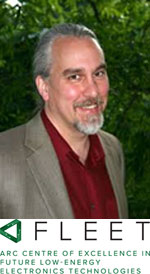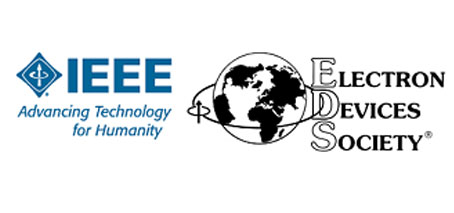A panel of experts featuring Dr Paolo Gargini (formerly Intel, head of several international semiconductor roadmaps), Prof Michelle Simmons (UNSW, Director. ARC Centre for Quantum Computation and Communication Technology) and Prof Michael Fuhrer (Monash Uni., Director of ARC Centre of Excellence in Future Low Energy Electronics Technologies.) and a guided discussion about the future of electronics beyond CMOS and the role semiconductors and other materials can still play through radically novel approaches.
Around 100 attendees dialled in for a webinar and discussions moderated by Prof Francesca Iacopi (Chair of the IEEE EDS Chapter in New South Wales), and Dr David Cortie (Chair of the Communications Committee for ARC FLEET). This colloquium marked the inauguration of the IEEE NSW Electron Devices Society Chapter and was open free of charge to everyone.
Sections of the discussion are available on FLEET’s YouTube channel.
DISTINGUISHED SPEAKERS
 Dr Paolo Gargini, FIEEE, Chairman of the International Roadmap for Devices and Systems (IRDS)
Dr Paolo Gargini, FIEEE, Chairman of the International Roadmap for Devices and Systems (IRDS)
“The role of international roadmaps in semiconductor industry”
Dr Paolo Gargini is a pioneer of semiconductor development who worked closely with Gordon Moore (of ‘Moore’s Law’) at Intel, and has led the principal international industry roadmaps for electronics over the last decades.
After joining Intel in 1978, Dr Gargini was responsible for microprocessor technology including the renowned 80286 and 80386 processors. He also headed Intel’s first sub-micron process development team.
As Intel’s Director of Technology Strategy, and an Intel Fellow, he led worldwide consortia research for the Technology and Manufacturing Group (TMG) from 1993 to 2012.
Dr Gargini’s successfully transferred the foundations of fundamental technologies into Intel such as: Copper interconnects, 248nm and 193nm lithography, Strained Silicon, High-K/Metal-Gate, FinFET and many new materials.
From 1998 to 2016, Dr Gargini was Chairman of the International Technology Roadmap for Semiconductors (ITRS), and its successor, the International Roadmap for Devices and Systems (IRDS), sponsored by IEEE.
Dr Gargini was the first Chairman of the Governing Council of the Nanoelectronics Research Initiative (NRI), is a member of the VLSI Research Hall of Fame, and sits on the leadership committee of the IEEE initiative on Future Networks aimed at 5G and Beyond Roadmap.
 Professor Michelle Y. Simmons AO, UNSW Sydney, Director of the ARC Centre for Quantum Computation and Communication Technology (CQC2T)
Professor Michelle Y. Simmons AO, UNSW Sydney, Director of the ARC Centre for Quantum Computation and Communication Technology (CQC2T)
“Atomic Electronics in Silicon”
Prof Michelle Simmons leads the Centre of Excellence for Quantum Computation and Communications Technology in Australia and is the creator of atomic electronics in silicon.
After study and research in the UK, Prof Simmons was awarded an Australian Research Council QEII Fellowship to come to Australia, becoming a founding member of the country’s first Centre of Excellence for Quantum Computer Technology. She has been the Centre’s director since 2010.
Michelle has pioneered unique technologies to build electronic devices at the atomic scale. Her team is the only group world-wide that can create atomically precise devices in silicon – developing the first precision single atom transistor, narrowest conducting wires in silicon and most recently the demonstration of the first 2 qubit gate using phosphorus atoms in silicon.
With over 400 peer-reviewed publications, 21 granted patents and >180 invited/plenary talks, she is the international leader in atomic electronics. Her numerous accolades include ARC Laureate Fellow, Australian of the Year (2018), Feynman Prize, US Foresight Institute (2016), Thomas Ranken Lyle Medal, Australian Academy of Science (2015), Fellow of the Royal Society of London (2018) and Fellow of the American Academy of Arts and Science (2014).
She is also the founding Director of Silicon Quantum Computing, Australia’s first quantum computing company and Editor-in-Chief of npj Quantum Information, Nature’s premier journal in the emerging field of quantum information science.
 Professor Michael S. Fuhrer, Monash University, Director of the ARC Centre for Future Low-Energy Electronics Technologies (FLEET)
Professor Michael S. Fuhrer, Monash University, Director of the ARC Centre for Future Low-Energy Electronics Technologies (FLEET)
“Electronics devices with topological insulators”
Professor Michael Fuhrer directs the ARC Centre of Excellence in Future Low-Energy Electronics Technologies (FLEET), where he leads the search for a new generation of ultra-low energy electronics, based on novel ‘beyond CMOS’ technologies.
Michael is a pioneer of the study of graphene and also co-directs the Monash Centre for Atomically Thin Materials. Prior to coming to Australia, Michael directed the Center for Nanophysics and Advanced Materials at the University of Maryland, US. Michael is a Fellow of the American Association for the Advancement of Science and the American Physical Society, and an ARC Laureate Fellow.
Michael’s research in the School of Physics at Monash University explores novel two-dimensional materials such as graphene, the two-dimensional surface state of three-dimensional topological insulators (e.g. Bi2Se3), and other two-dimensional semiconductors, metals, and superconductors.

